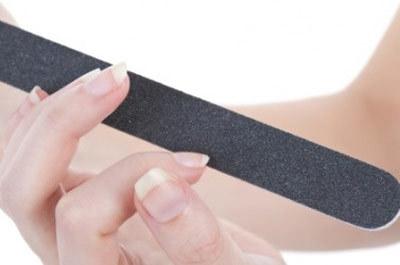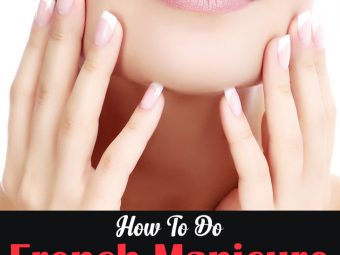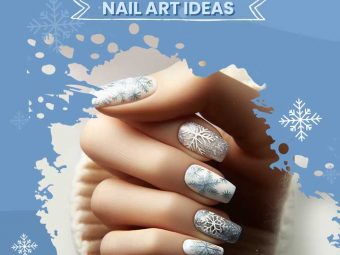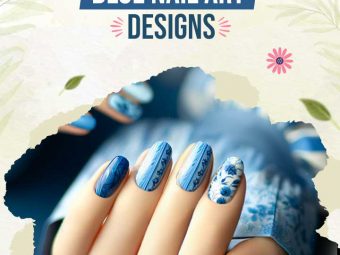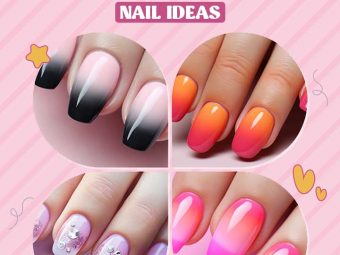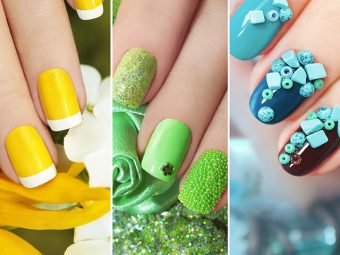What Is Nail Buffing And How To Do It At Home?
With a good buffer board, you're already halfway towards having smooth, strong nails.
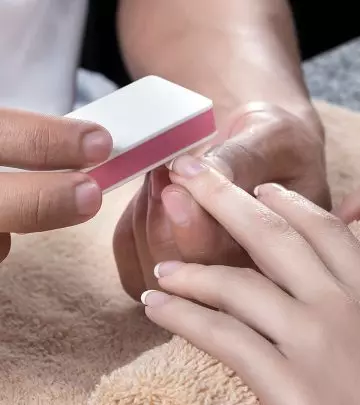
Image: Shutterstock
You know about trimming your nails, but we bet you have wondered what nail buffing is exactly. It uses a buffer board to file your nails, making sure it remains healthy, sturdy, and shiny for a long period. Sometimes, we tend to live with chipped or broken nails hoping they will grow out properly without nail care. But you will only worsen your nail health by doing that. So, get a good buffer board and get to work right now! Scroll down.
 Keep In Mind
Keep In Mind- Nail Care: Nail Care Use a moisturizer to keep the nail bed smooth and prevent brittleness.
- Nail Shape: Nail Care While all long nails can easily break, square- and coffin-shaped nails are the most prone to breakage.
- Caution: Nail Care Avoid wearing nail polish for long as it carries harmful toxins such as toluene, which can cause brittle nails and be hazardous to health.
In This Article
What Is Nail Buffing?
Nail buffing means polishing or rubbing your nails with a sanding block (nail buffer) that’s made of fine grit. This leaves your nails looking smoother and shinier.
How To Buff Nails At Home?
- Make sure your nails are dry and clean – wet nails can break or chip easily
- Use a nail polish remover to remove any traces of nail paint
- Trim your nails to a desired length
- File your nails in a shape that you want – round, square or whatever suits you.
- Get a nail buffer – this can either be a sanding block or a nail buffer and will have different textures on the sides.
- Using the roughest side of the buffer, buff your nails gently, moving the buffer from side-to-side.
- Try and remove the roughness from your nails first.
- Take a soft cotton cloth to wipe off the extracts
- Now take the texture that’s a little less rough and repeat the steps in a gentle, side-to-side motion.
- Take the smoothest part of the buffer and buff your nails until they look shiny – as if you’ve applied a clear coat.
- Wipe off your nails with the cotton cloth
Louise Antonette, a blogger, follows a three-step buffing routine that includes managing ridges, smoothing out the scratches, and making the nails shine. She shares in one of her blog posts, “After doing steps 1 to 3 I instantly got glossy nails. The shine could last a week or more. This practically saves me hundreds of pesos I usually spend when going to a salon to have my nails done (i).”
 Quick Tip
Quick TipCan you do nail buffing without a buffer? Let us find that out here.
How To Buff Nails Without A Buffer?
- Yes, you can buff your nails even if you do not have a buffer. Here is how:
- Soak your nails in warm water for around 5 minutes.
- Dip a soft-bristle toothbrush into nail polish remover or acetone.
- Brush your nails’ surface to eliminate any lingering bubbles from previous polishing.
- Take an old T-shirt or a microfiber cloth and buff the nails.
- Use a lint-free wipe or cotton balls soaked in nail polish remover to cleanse nails, removing excess acetone and oils.
If necessary, repeat steps 2 to 4 until your nails achieve the desired level of smoothness.
How Often to Buff Nails?
You can buff your nails once a week to enhance its beauty or every time you do your at-home manicure or pedicure. It will help keep your nails stain-free from nail polish and smooth!
 Quick Tip
Quick TipDifferent Nail Buffing Tools In The Market
1. Nail Buffer/Sanding Block
These have a higher grit and are more gentle and can also help shape your nails to some extent.
2. Nail Buffer Board
These are generally made of fine-grade sand-paper and help smoothen out any rough edges on nails.
3. Cute Nail Buffers In Various Shapes
These are generally smaller than the regular boards, can be popped inside your tote and are easy to use.
4. Nail Buffing Blocks
These are 3-dimensional buffing blocks that are rectangular in shape and come with a different texture on both sides to help smoothen out rough edges and bring a shine on the nails.
5. Nail Buffer Strips
These are more like papery strips made of sand-paper and do the same work as the emery board, buffing wheel, or nail buff, but are used more as a replacement in case you’re not carrying those around with you. Great for travel.
Does Nail Buffing Increase Hair Growth?
There is no concrete proof that nail buffing increases hair growth. However, it is a proven fact that rubbing the nails of your left and right hand together can actually lead to hair growth.
A Few Things To Keep In Mind About Nail Buffing
- Rubbing thumbnails will increase growth of facial hairs, so don’t rub your thumbs
- Do not rub your nails during pregnancy as it can cause uterine contractions and lead to high blood pressure
- Avoid during surgical conditions
- Avoid in case of any skin infections
- Avoid if nails are brittle
- Avoid if you are currently suffering, or have suffered in the past from hypertension, as this can lead to increased blood pressure
- Do not overdo, as it can harm nails
- Do this only for 5-10 minutes a day, twice a day for better results, but not more
Infographic: Best Nail Buffing Tools And Tips
Your nails are as important as your skin and hair. They need to be taken care of properly to ensure they are healthy and strong. Here, we have made a list of the best nail buffing tools and also added a few important tips you should keep in mind. Check out the infographic below to learn further.

Illustration: StyleCraze Design Team
If you have ever suffered a nail injury, you must know how painful it can be. However, just because they are dead cells, you cannot neglect them. Regular nail buffing and grooming should be an essential part of your routine to maintain your nails’ good health, shape, and shine. This article tells you what nail buffing is and guides you through steps about how to do it yourself at home along with the uses of nail buffer. So, get yourself some nail buffing tools – you can refer to the list of different types of buffing tools above and get started. Also, note the precautions we have shared to avoid buffing your nails under certain circumstances.
Frequently Asked Questions
Does buffing strengthen nails?
Yes. Buffing improves the blood circulation under the nail bed, boosting nail growth and shine. However, you shouldn’t buff more than once a month, as overdoing it can make your nails brittle.
Should I buff my nails before gel polish?
Yes. Buffing your nails before applying gel polish or nail art ensures that the nail is smooth enough for the application and that the gel can bond with it.
Why do nail salons buff nails?
Nail salons buff nails to cover any ridges and cracks and make the nails look smoother and shinier.
Image source: 1 , 2 , 3 , 4 , 5
Key Takeaways
- Polishing your nails with a buffer board can give them a smooth and shiny finish.
- You can easily buff your nails at home with different nail buffing tools, such as an emery board, nail buffing blocks, or buffer strips.
- Buffing shows better results on nails that are properly cleaned, trimmed, and filed.
- The roughest side of the buffer helps smoothen your nails, while the smoothest part helps give them a shine.
- You can buff your nails once a month to make them look extra shiny and healthy.

Image: Dall·E/StyleCraze Design Team
Check out the video below to get tips on the best techniques for buffing and polishing your nails and get ready to flaunt those glossy nails!
Personal Experience: Source
StyleCraze's articles are interwoven with authentic personal narratives that provide depth and resonance to our content. Below are the sources of the personal accounts referenced in this article.
i. 3 steps to buffed nails at no costhttps://www.mommypracticality.com/2012/09/ThreeStepsToNailBuffing.html






